Compared: 2023 Mazda CX-30 vs. 2023 Mazda CX-5
Compact vs. subcompact defines these two fun-to-drive crossovers from Mazda.
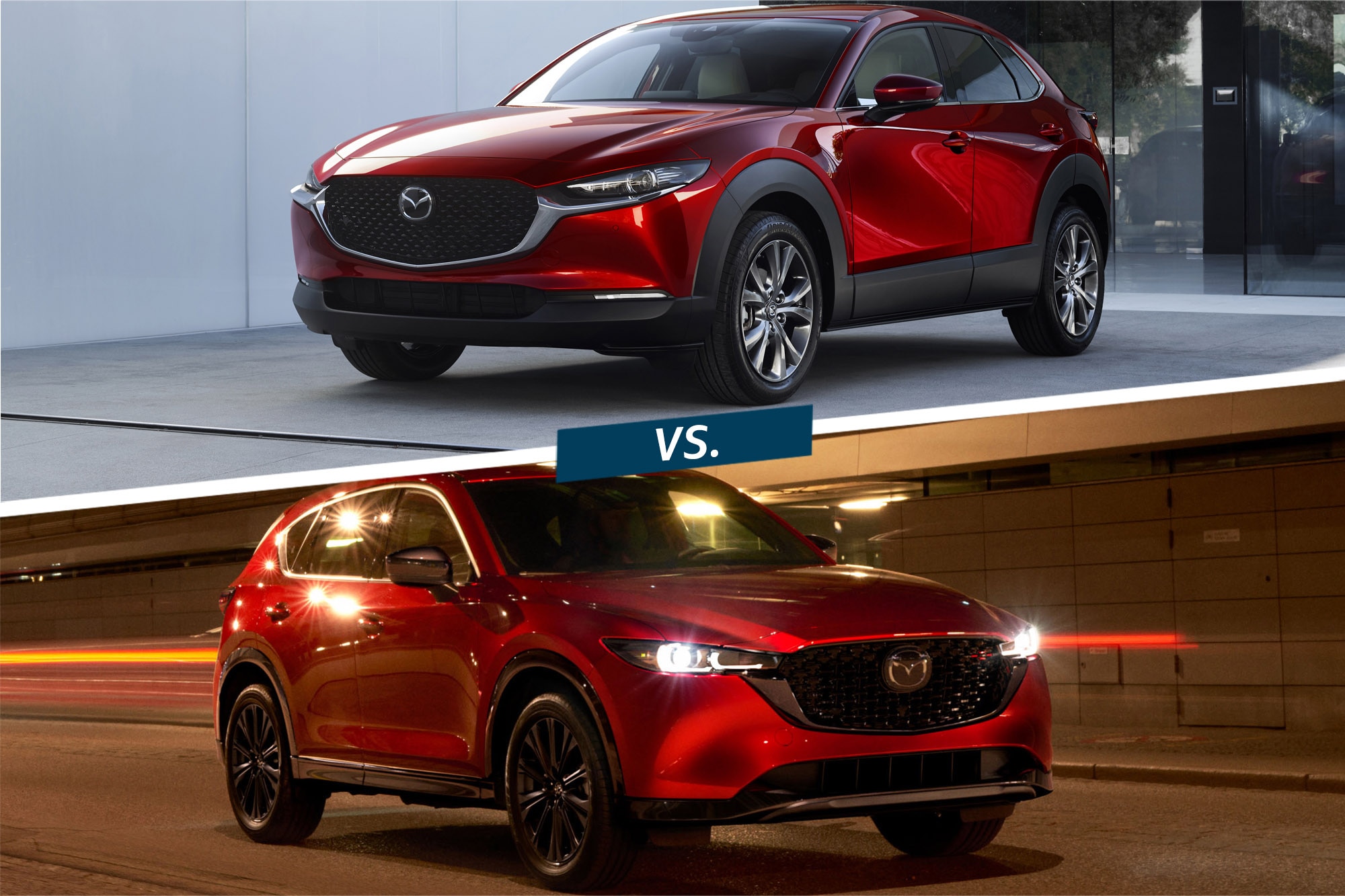 Mazda
Mazda
Mazda's showroom is crowded with crossovers, including the subcompact 2023 Mazda CX-30 and the compact 2023 Mazda CX-5. Although the CX-30 is newer in terms of design, each of these SUVs shares similar drivetrains and equipment, which can make it challenging to decide which one is the right fit for your family.
For most, however, it will come down to expectations surrounding size and price, the two areas where these Mazdas are most different.
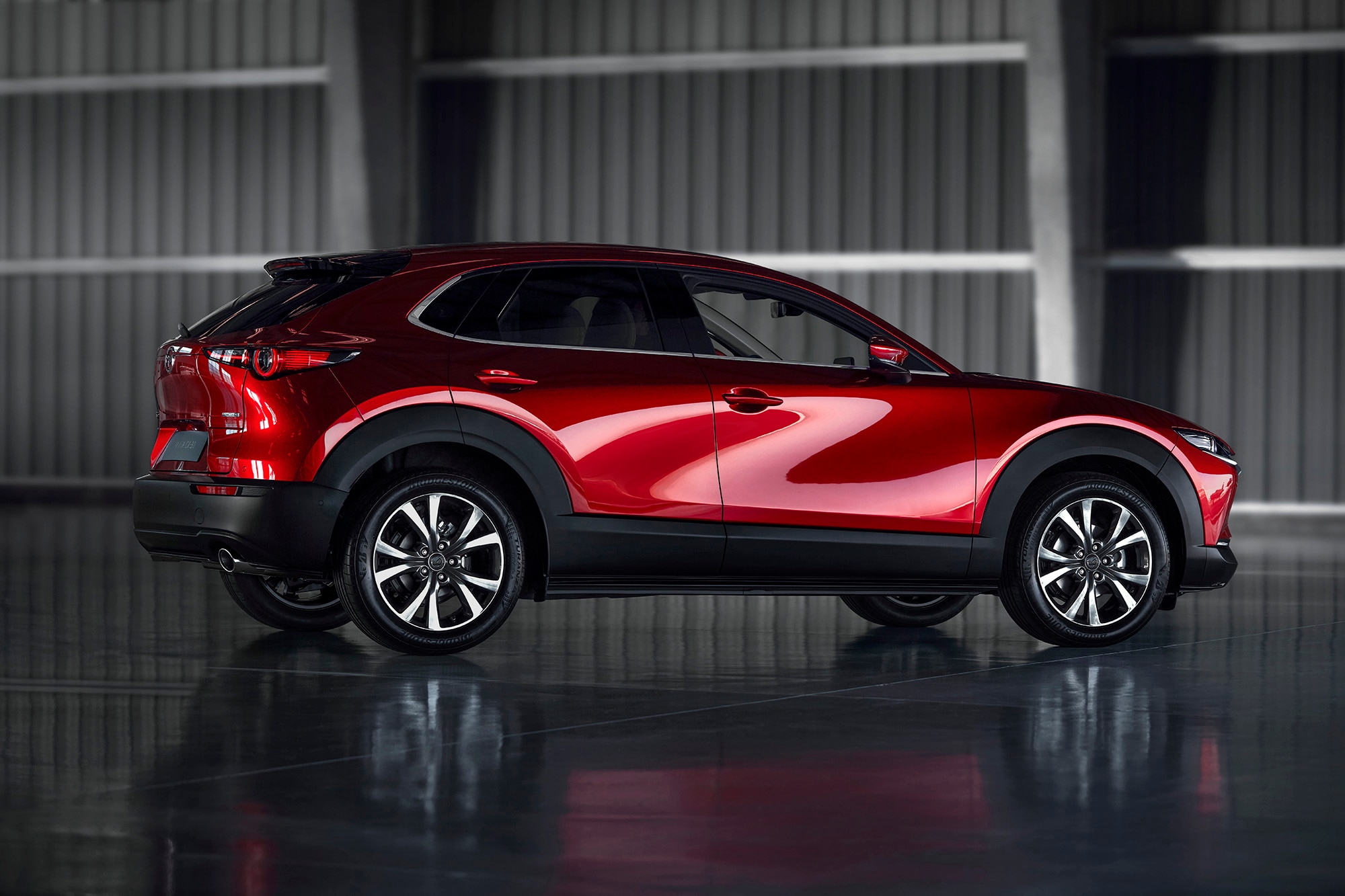 Mazda
Mazda
The Mazda CX-5 Is Larger and More Expensive Than the CX-30
The 2023 Mazda CX-30 is the least expensive of these two SUVs. Starting at about $24,000, the base 2.5 S trim includes all-wheel drive (AWD) and a 2.5-liter four-cylinder engine making 191 horsepower.
A turbocharged version of this motor arrives with the $35,000 2.5 Turbo Premium trim, bringing with it 250 horsepower and retaining AWD. The top-tier CX-30, the 2.5 Turbo Premium Plus, starts at about $37,000.
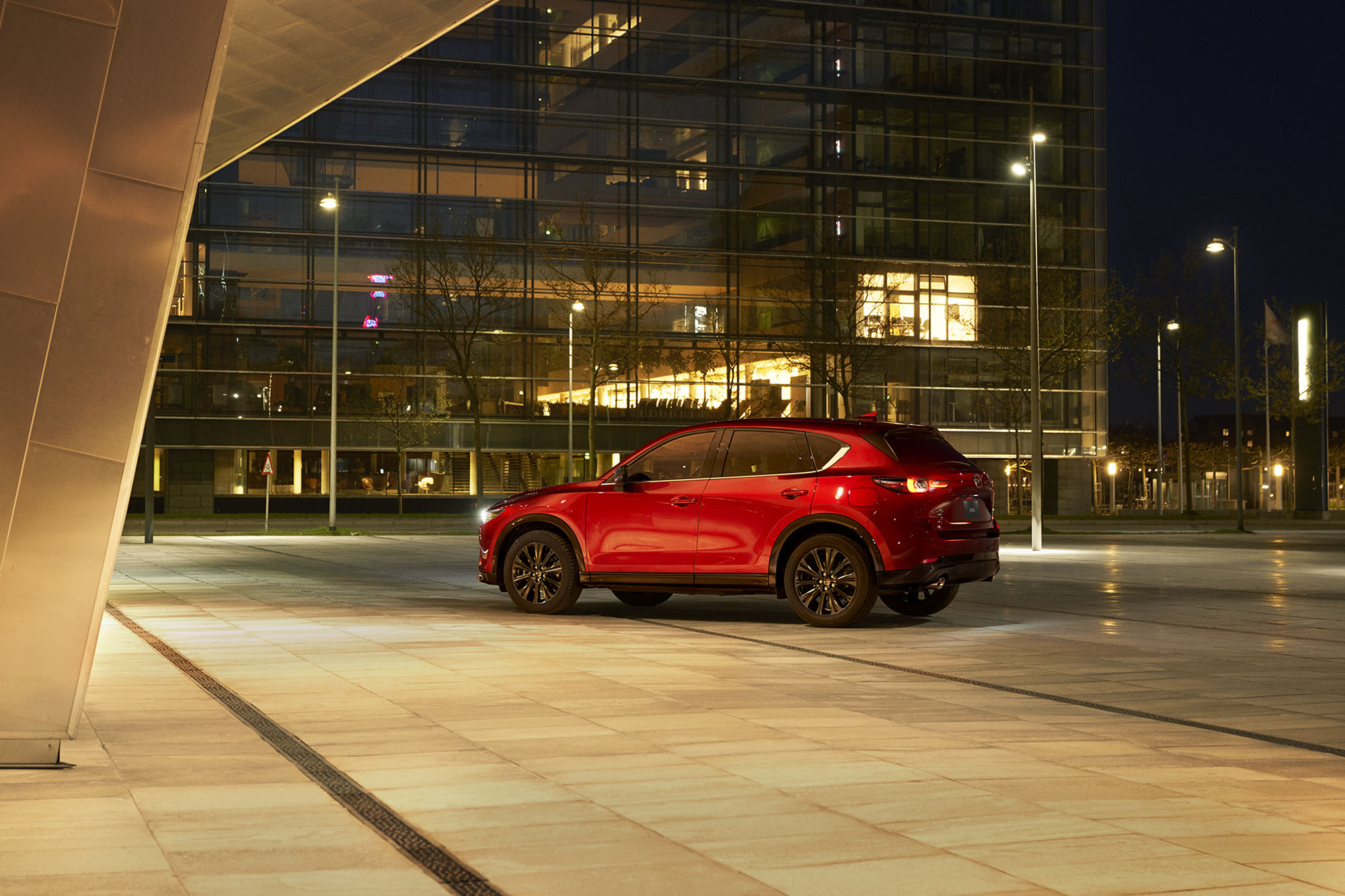 Mazda
Mazda
The larger 2023 Mazda CX-5 features a starting price of $28,000 for the S trim, which is $4,000 more than the most affordable CX-30. That nets you the same base engine found in the CX-30 — tuned to 187 horsepower — as well as standard AWD.
The $38,000 CX-5 2.5 Turbo adds a version of the CX-30's turbocharged four-cylinder, this time capable of 256 horsepower when using premium fuel. The $41,000 2.5 Turbo Signature caps the CX-5's range.
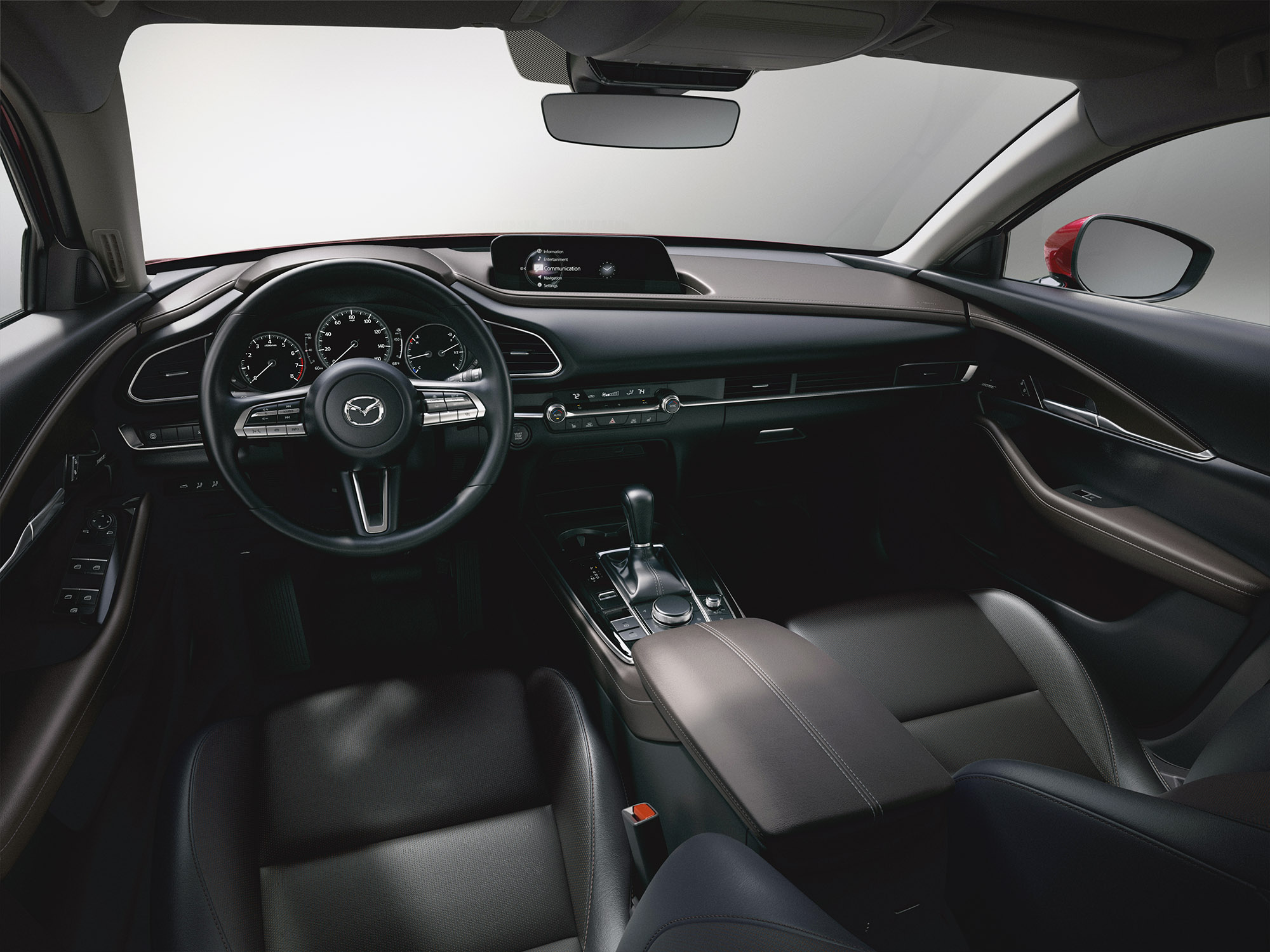 Mazda
Mazda
The CX-5's Interior Is Larger Than the CX-30's, Too
The most obvious difference between the CX-30 and the CX-5 is the amount of interior space. The CX-5 is noticeably larger, particularly in the second row where there are 3.3 inches of extra legroom — 39.6 inches versus 36.3.
There's a similar gap in favor of the CX-5 when comparing cargo space: The CX-30 offers 20.2 cubic-feet while the larger CX-5 comes in at 29.1 cu-ft between the rear seatback and the hatch. Fold down the back seat and the CX-30's cargo capacity expands to 45.2 cu-ft, unable to match the CX-5's 58.1 cubes.
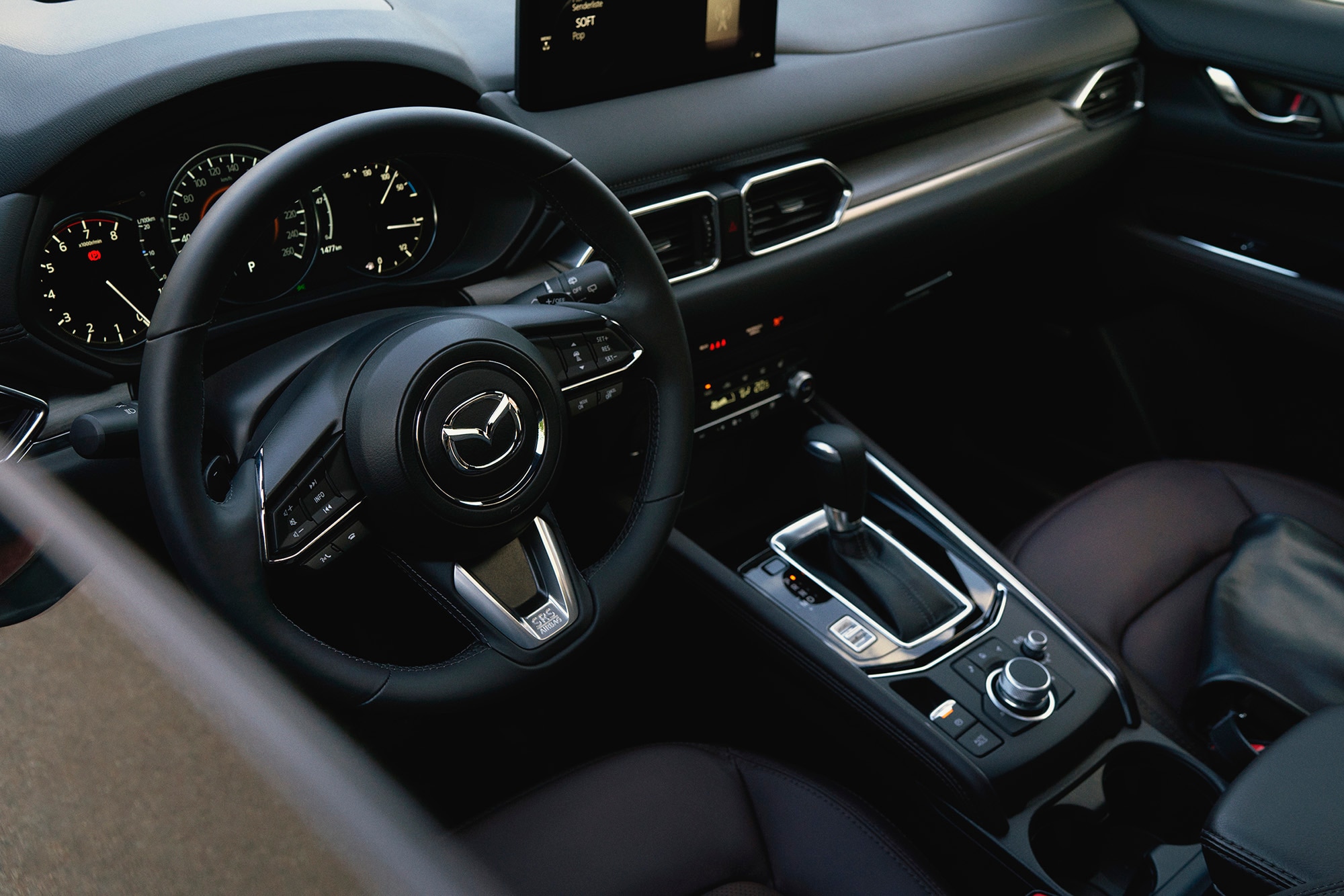 Mazda
Mazda
The Mazda CX-30 Is More Fuel Efficient Than the CX-5
With its more modest footprint and mass, the Mazda CX-30 pulls ahead when it comes to fuel efficiency. Equipped with the entry-level engine, the CX-30 returns 26/33/29 mpg city/highway/combined and 22/30/25 mpg for the turbocharged unit.
The beefier CX-5's 24/30/26-mpg rating is behind its smaller sibling when comparing the base four-cylinder engines. Same goes for the turbo at 22/27/24 mpg.
All vehicle pricing includes MSRP plus destination charges (set at the time of publication), and will be rounded to the nearest thousand.
Written by humans.
Edited by humans.
 Benjamin Hunting
Benjamin HuntingNearly two decades into his career as an automotive journalist, Benjamin has had his hands greasy, his hair blown back, and his heart broken by more than one project car. In addition to his work at Capital One, he has contributed features and reviews to Motor Trend, Car and Driver, Hagerty, Driving Line, Inside Hook, Super Street, European Car, Roadkill Magazine, Motor 1, The Drive, the Toronto Star, the National Post, Business Insider, NAPA, Autoblog, Automotive News Canada, and AutoGuide. He is also cohost of the Unnamed Automotive Podcast and cocreator of the Code 45 and Dead Air graphic novels. In his spare time, he's a friend to vinyl and enjoys keeping the shiny side up during track days.
Related articles
View more related articles